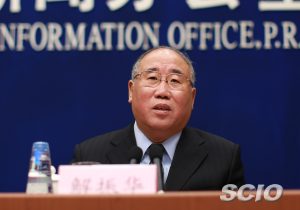During COP 22 in Marrakech, people have been talking about the important role that subnational actors play in fighting climate change. The second Climate Summit for Local and Regional Leaders was held on 14th November in parallel to COP 22. More than 780 local governments from 114 countries attended the summit. At the same time, China held a themed meeting in China’s Pavilion about subnational actors within China and the Alliance of Peaking Pioneer Cities of China (APPC).
The APPC was established during the US-China Climate Leaders Summit in 2015[i]. All cities, provinces in the alliance had established carbon emission peaking goals to show their commitment of early peaking. For example, Beijing and Guangzhou planned to peak their carbon emission around 2020 while the whole country plan to peak around 2030. By now, 23 subnational actors within China have joined this alliance, which totally account for 16.8% of the population, 27.5% of GDP, and 16.5% of the carbon emission of the whole country[ii].
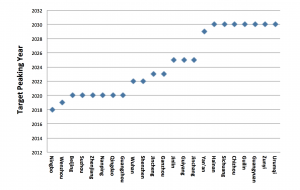
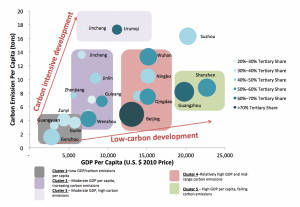
As a member of this alliance, my hometown Wuhan is the biggest city in Huazhong (middle area of China). After Wuhan promised to peak its carbon emission during the Fourteenth Five-Year Plan (2021-2025), it issued a series of measures to reduce carbon emission:
- Renewed its public bicycle system to reduce carbon emission from transportation sector;
- Invested 20,000,000 euros to rebuilt 25 public buildings (which totally sum up to 1,350,000 square meters) and raise the energy efficiency of those buildings;
- Started a regulation in 2015 to prohibit investment in high energy consumption projects;
- Set the goal of energy mix (the total coal consumption in 2017 should not exceed the consumption in 2012);
- Gave priority to renewable energy development and energy-saving projects;
I spent four undergraduate years in Beijing, which is also an APPC city. Beijing has committed to peak its carbon its emissions around 2020, which is within 3 years. It has been working hard through the following measures:
- Promoting its public bicycle system;
- Strict regulation on the total number of cars running in the city;
- Strengthening the standard of energy-saving buildings (last year issued a revised standard of energy saving on building design);
- Rebuilding the heating system in the city and transiting to natural gas for heating (1200 community have finished rebuilding process; 320,000 tons of coal is estimated to be saved from the rebuilding).
Other cities are also taking actions. The four levers that cities have been focusing on are: an industrial shift, demand reduction, energy efficiency, and decarbonization. There are comprehensive sets of strategies within each lever, which can be seen from the tableii.
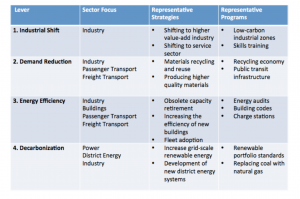
The APPC has also been collaborating with the international community. This June, the APPC signed a Memorandum with Compact of Mayors to strengthen the cooperation between US and Chinese subnational actors[iii]. Chinese delegation Zhenmin LIU said to Wall Street Journalist in a press during COP 22 in Marrakech that “The expectation of China is that US-China cooperation in climate change negotiation will continue; and so does cooperation at state level, city level.”
In addition to the organization of the APPC, subnational actors in China have also been actively collaborating with international community to tackle climate change. Beijing, HongKong, Shanghai, Wuhan, Dalian, Chengdu, Guangzhou and Nanjing have joined C40 Cities Climate Leadership Group, which is a network of the world’s megacities committed to addressing climate change[iv]. Shenyang, Guiyang, Foshan are members of ICLEI[v], which engages more than 1,500 cities, towns and regions committed to building a sustainable future. During COP 22 in Marrakech, I was lucky to meet people from ICLEI. They told me that ICLEI has been working on cooperation with Chinese cities and is going to have an office in Beijing within several months.
[i] https://www.whitehouse.gov/the-press-office/2015/09/15/fact-sheet-us-%E2%80%93-china-climate-leaders-summit
[ii] APPC City Peaking and Decarbonization Best Practices 2016, available at http://appc.ccchina.gov.cn/Detail.aspx?newsId=62310&TId=237
[iii] https://www.compactofmayors.org/press/the-compact-of-mayors-alliance-of-peaking-pioneer-cities-sign-mou-2/
[iv] http://www.c40.org/cities
[v] http://www.iclei.org/iclei-members/iclei-members.html
(Graphs and table can be found in the reports that endnote ii refers to)
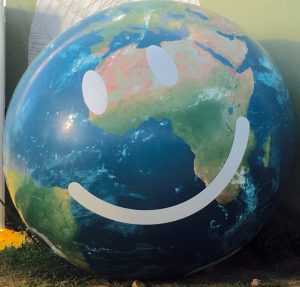 negative adjectives of the election and
negative adjectives of the election and